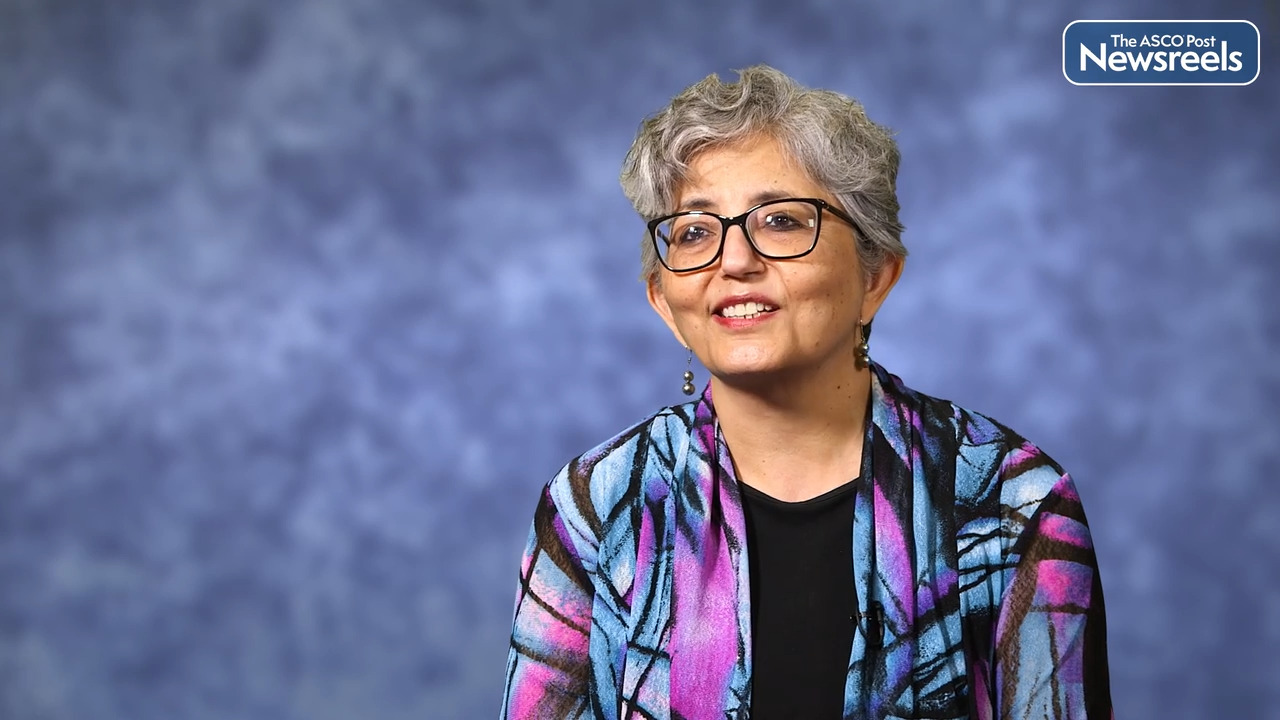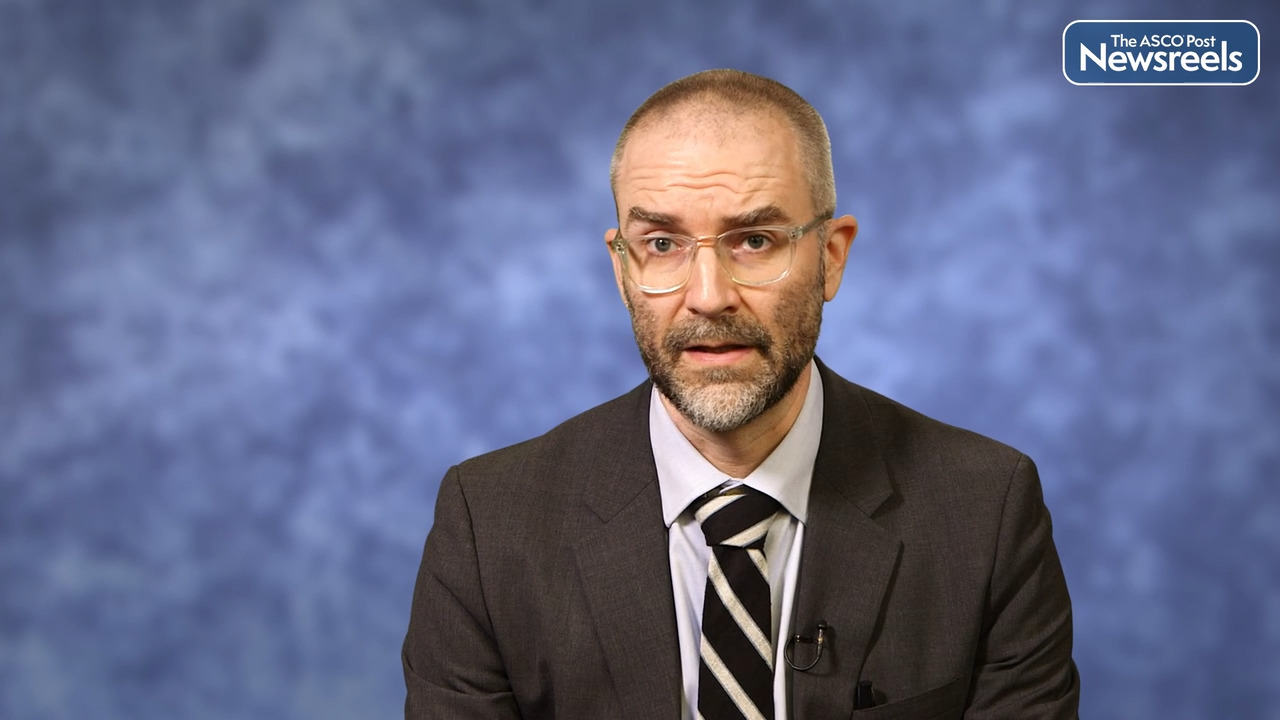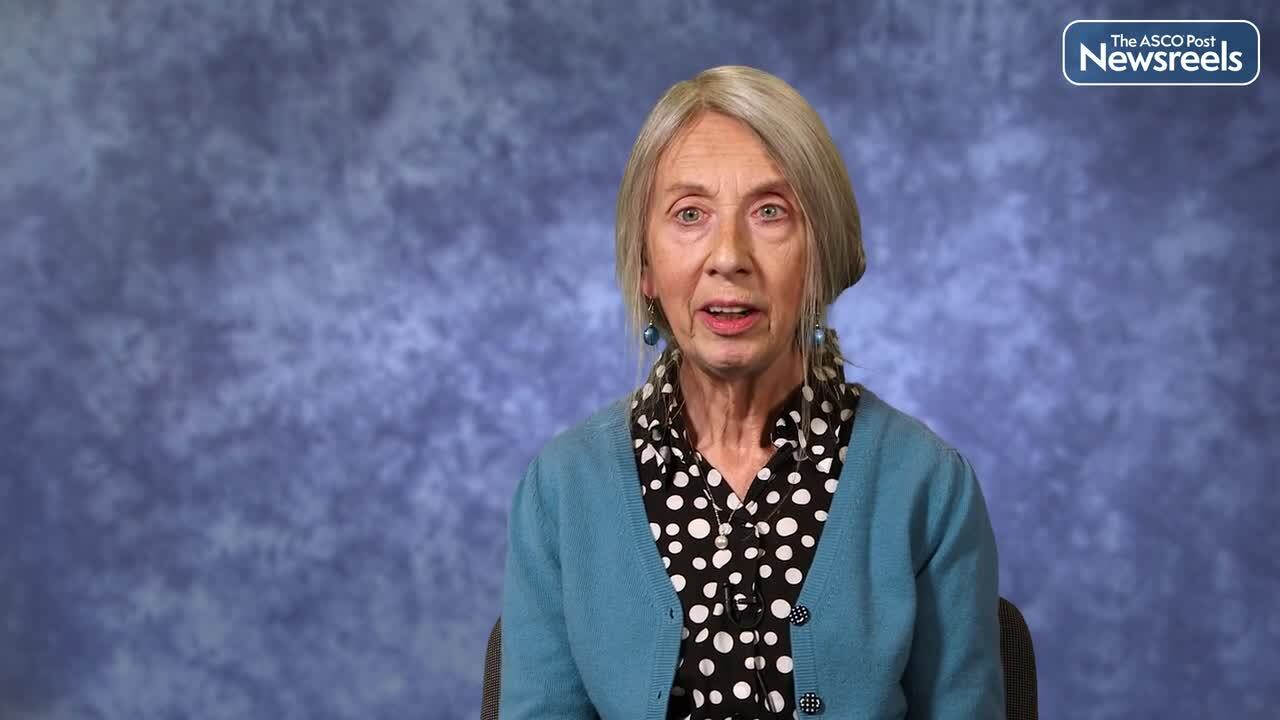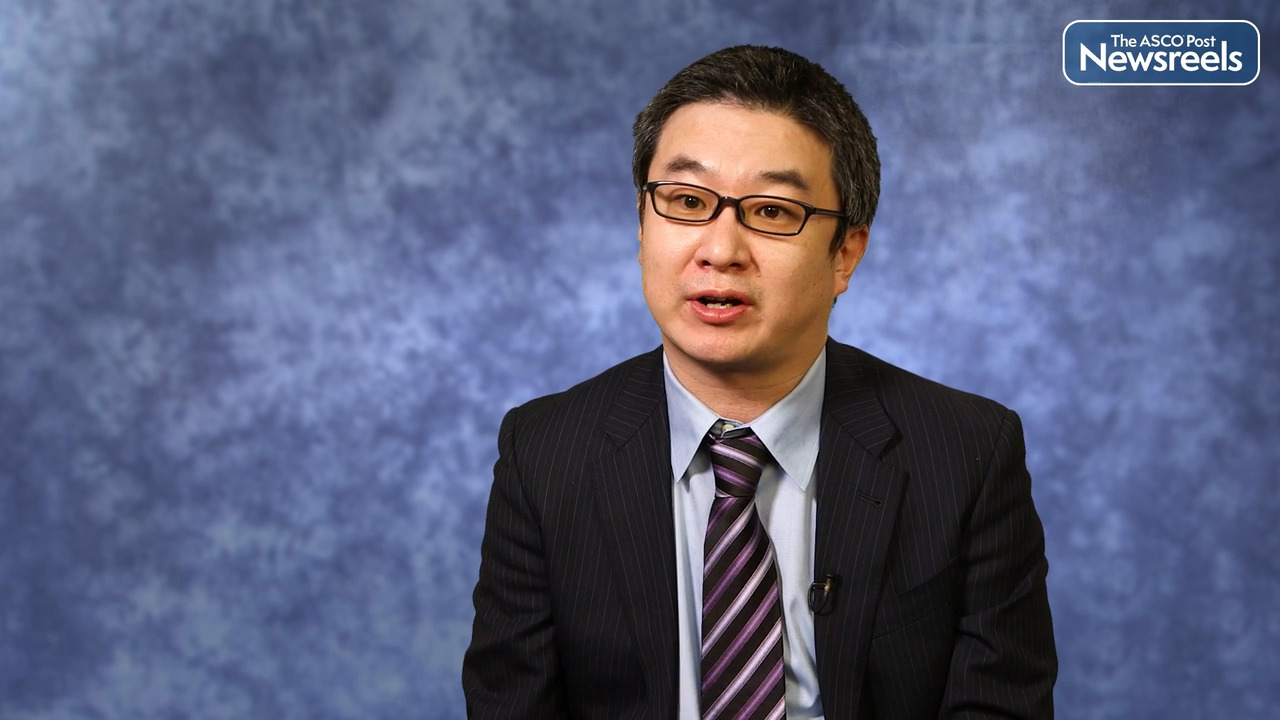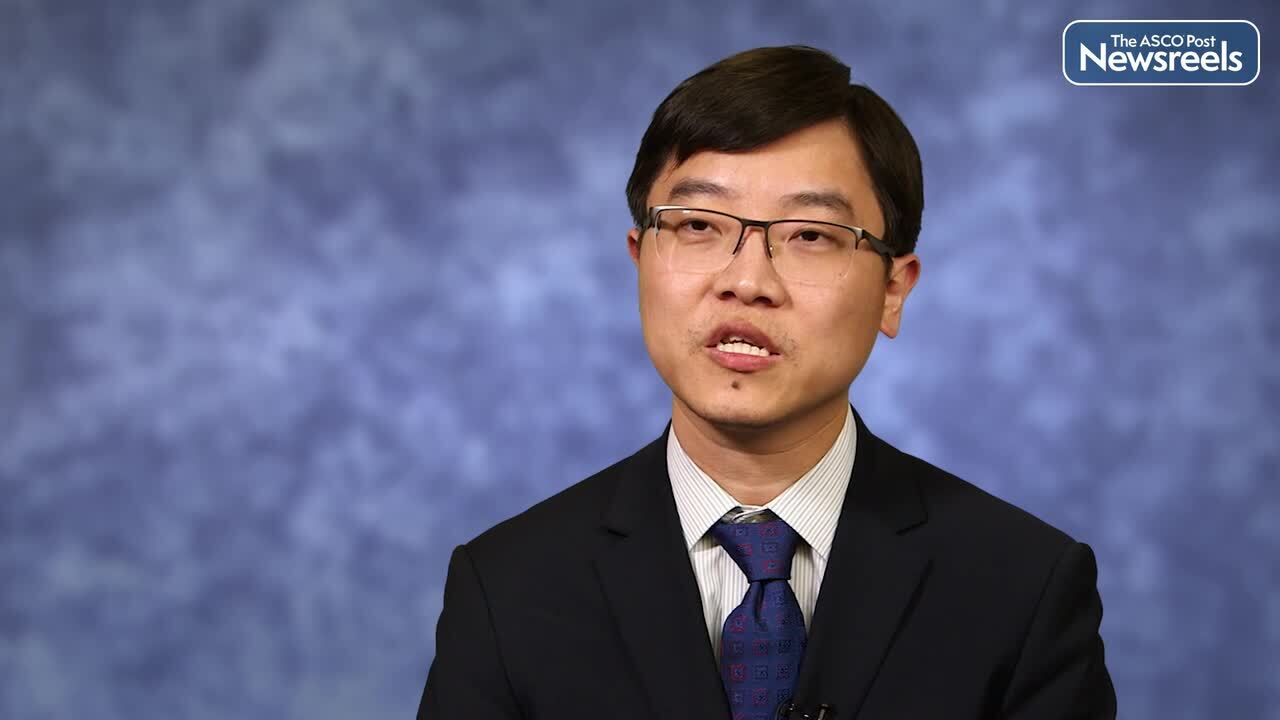Paul G. Richardson, MD, on Multiple Myeloma: Mezigdomide Plus Dexamethasone in Relapsed and Refractory Disease
2022 ASH Annual Meeting and Exposition
Paul G. Richardson, MD, of the Dana-Farber Cancer Institute, discusses preliminary results from the dose-expansion phase of the CC-92480-MM-001 Trial, which showed promising efficacy in patients with relapsed and refractory multiple myeloma, including those with prior BCMA-targeted therapies. Patients in these two groups had an overall response rate of 40% and 50%, respectively. The results support the development of mezigdomide, currently being evaluated in combination with standard therapies in multiple myeloma as part of a large, ongoing phase I/II trial (NCT03989414) and planned phase III studies (Abstract 568).
Transcript
Disclaimer: This video transcript has not been proofread or edited and may contain errors.
Well, it's my pleasure to present at this meeting the results of our mezigdomide dexamethasone combination dose expansion part of a phase I/II trial. This was exclusively in relapsed and refractory myeloma patients who were triple-class refractory. That meant that three classes of drugs had failed them and they were also allowed to have received prior BCMA therapy, which is an important new aspect of myeloma management. Because obviously BCMA has been a very exciting advance as the target. But the question obviously then arises when treatment fails in that space, what are effective agents there? What are the effective agents that can meet that challenge? So we allowed BCMA exposed patients as well as triple-class refractory patients to receive mezigdomide combined with low-dose dexamethasone. And the dexamethasone was given on a weekly schedule. mezigdomide was given three weeks on and one week off. And mezigdomide is this really very interesting oral agent.
It's what's called a CELMoD. These are very powerful drugs that engage the cereblon E3 ligase complex inside the myeloma cell and result in profound pathobiologic changes within the myeloma cell through the targeted degradation of Ikaros and Aiolos. They also have enormous immune system effects. They stimulate specific T-cells and NK cells and have an immune effect on the tumor as a result. So really a very exciting class of drug. And in that context we were able to show a response rate of 40%, actually 41% to be precise overall for the whole 101 patients on intent to treat. What we were able to also show in the subgroups was a 30% response rate in patients with extramedullary disease. And what was really interesting, in about a third of patients who had BCMA exposure, we showed a 50% response rate.
So really nice response data. In the original phase one portion of the study, we demonstrated a response rate in the small number of patients at the RP2D and there was the recommended phase two dose. We've shown a response rate of 55%. So all of this data was very consistent in terms of the safety. Again, very consistent, very similar to what we saw in the phase one portion with neutropenia, some thrombocytopenia, some fatigue. But beyond that everything else was very, very uncommon in terms of any non-hematologic side effects. And above all, we didn't see thrombosis, we didn't see neuropathy, we didn't see cardiac issues. We found that the drug was generally well tolerated. So in terms of future directions, we know that mezigdomide is extremely active in combination and there are trials ongoing combining the mezigdomide with bortezomib, carfilzomib and monoclonal antibodies.
And these studies hopefully will bear fruit within the next three to four years or so in terms of a readout. In the meantime, to have this exciting data is really quite important because it tells us that we've got an oral agent with a convenience of that, that we can actually literally take off-the-shelf for our patients. And in that spirit, one of the other things that was important among the safety profile was to us we did have some infections. They were at a much lower rate than you would normally see with say, an antibody based therapy. And also we only had one COVID death despite seeing some COVID infection because of the timing of the trial. In that context of over 100 patients, there was only one person who died of COVID. So really important information to share with the community and hopefully very exciting new addition to the army in the relative near future.
Related Videos
The ASCO Post Staff
Smita Bhatia, MD, MPH, of the Institute for Cancer Outcomes and Survivorship, University of Alabama at Birmingham, discusses study findings that showed key somatic mutations in the peripheral blood stem cell product increases the risk of developing therapy-related myeloid neoplasms (Abstract 119).
The ASCO Post Staff
Joseph Schroers-Martin, MD, of Stanford University, discusses immunogenomic features reflecting divergent biology in posttransplant lymphoproliferative disorders (PTLD). These include evidence of mismatch repair defects in Epstein-Barr virus–positive PTLD, tumor microenvironment depletion, and MYC pathway enrichment in certain patients (Abstract 72).
The ASCO Post Staff
Irene Roberts, MD, of Oxford’s Weatherall Institute of Molecular Medicine, discusses children with Down syndrome, who have a more than 100-fold increased risk of developing acute myeloid leukemia before their fourth birthday compared to children without Down syndrome. Their risk of acute lymphoblastic leukemia is also increased by around 30-fold. Dr. Roberts details current knowledge about the biologic and molecular basis of this relationship between leukemia and Down syndrome, the role of trisomy 21 in leukemogenesis, and the clinical implications of these findings.
The ASCO Post Staff
Tomohiro Aoki, MD, PhD, of the University of British Columbia and the Centre for Lymphoid Cancer at BC Cancer, discusses a novel prognostic model applicable to patients with relapsed or refractory classical Hodgkin lymphoma who were treated with autologous stem cell transplantation. The model has shown the interaction between the biomarker CXCR5 on HRS cells (Hodgkin and Reed/Sternberg cells, hallmarks of Hodgkin lymphoma) with specific follicular T helper cells and macrophages, a prominent crosstalk axis in relapsed disease. This insight opens new avenues to developing predictive biomarkers (Abstract 71).
The ASCO Post Staff
Jiye Liu, PhD, of Dana-Farber Cancer Institute, discusses study findings that demonstrate KDM6A regulates CD38 and CD48 expression in multiple myeloma. Dr. Liu’s team validated combination treatment with an FDA-approved EZH2 inhibitor plus daratumumab, which can overcome daratumumab resistance in preclinical multiple myeloma models, providing the rationale for combination clinical trials to improve patient outcome (Abstract 148).
